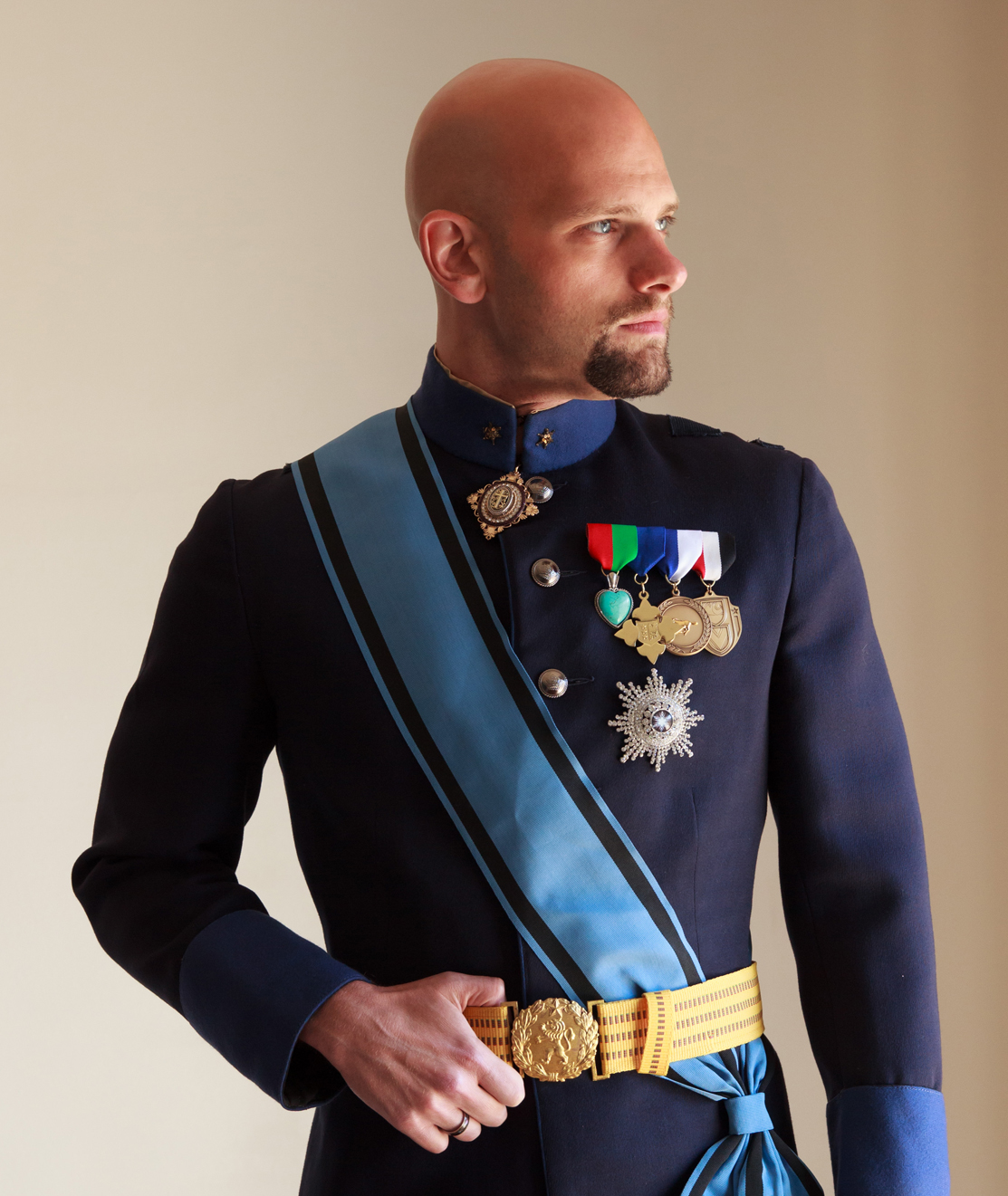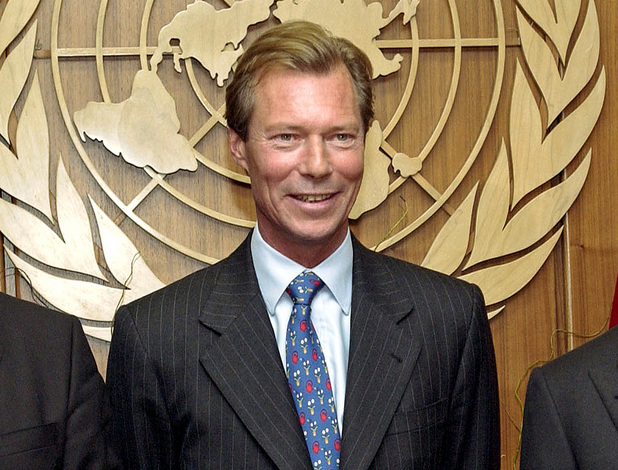Difference between revisions of "Grand Duke"
m (removed gendered use) |
Westarctica (talk | contribs) |
||
| (6 intermediate revisions by the same user not shown) | |||
| Line 1: | Line 1: | ||
Within Westarctica, the title '''Grand Duke''' (female equivalent: '''Grand Duchess''') is the | [[File:Grand Duke Travis.jpg|300px|thumb|Grand Duke Travis of Westarctica]] | ||
Within [[Westarctica]], the title '''Grand Duke''' (female equivalent: '''Grand Duchess''') is the title held by the Sovereign in their capacity as the national Head of State. The [[Grand Duke of Westarctica]] is the font of honor from which all [[Peerage of Westarctica|peerage titles]] are bestowed. | |||
Though constrained in certain respects by the nation's [[Constitution of Westarctica|Constitution]], the office | Though constrained in certain respects by the nation's [[Constitution of Westarctica|Constitution]], the title and office wields enormous personal power, including the power to appoint and dismiss members of the [[Royal Council]]. | ||
==History of the title in Europe== | |||
One of the first people to bear the title of Grand Duke was Count Gonçalo I Mendes of Portucale in northwest Portugal. In 987, he adopted the personal title of ''Magnus Dux Portucalensium'' ("Grand Duke of the Portuguese") and rebelled against his feudal lord, King Bermudo II of León. He was defeated by the royal armies but nevertheless obtained a remarkable autonomy as a ''Magnus Dux'' (Grand Duke), leading ultimately to Portuguese independence from the Spanish Kingdom of Castille-León. | |||
Another example was the line of self-proclaimed Grand Dukes of Burgundy in the 15th century. Philip III, Duke of Burgundy (reigned 1419–67) assumed the subsidiary, legally-void style and title "Grand Duke of the West" in 1435, having previously brought the Duchies of Brabant and Limburg as well as the counties of Holland, Zeeland, Friesland, Hainaut and Namur into his possession. | |||
The first reigning monarch ever officially titled grand duke was the Medici sovereign of Tuscany. This official title was granted by Pope Pius V in 1569. | |||
Napoleon I awarded the title extensively. During his era, several of his allies (and ''de facto'' vassals) were allowed to assume the title of grand duke, usually at the same time as their inherited fiefs (or fiefs granted by Napoleon) were enlarged by annexed territories previously belonging to enemies defeated on the battlefield. | |||
==Style and forms of address== | |||
[[File:Grand Duke Henri.jpg|300px|thumb|Grand Duke Henri of Luxembourg]] | |||
Most often, a sovereign grand duke was styled as "your/his/her royal highness" (abbreviated "HRH"), possibly because of the connection of many grand-ducal houses to royal ones or as the highest style beneath that of a king (which would be "your/his/her majesty", though "royal highness" is also used for such persons). | |||
The heir to the throne (a hereditary grand duke) was sometimes styled as "royal highness", but otherwise as "your/his/her grand ducal highness" (HGDH). Junior members of the family also generally bore the lower title of prince or princess with the style of "grand ducal highness." | |||
The Grand Ducal Family of Luxembourg styles all its members as "Royal Highness" since 1919, due to their being also cadet members of the Royal and Ducal House of Bourbon-Parma as male-line descendants of Prince Felix of Bourbon-Parma. | |||
==Notable Grand Dukes== | |||
As of 2023, there have been three Westarctican Grand Dukes: | |||
* [[Grand Duke Travis]] <small>''(current)''</small> | |||
* [[Grand Duke Philip]] | |||
* [[Grand Duke Jon-Lawrence]] | |||
Other notable Grand Dukes include: | |||
* [[Grand Duke Jacob of Broslavia]] | |||
* [[Grand Duke Nicholas of Flandrensis]] | |||
* Grand Duke Henri of Luxembourg | |||
{| class="wikitable" style="margin: auto;text-align:center;" | |||
!style="background:#ccdff3;text-align:center;"; colspan="3"|Ranks in the [[Peerage of Westarctica]]'' | |||
|- | |||
|style="background:#EAEAEA;text-align:center;"|'''Previous Rank''' | |||
|style="background:#EAEAEA;text-align:center;"|'''This Rank''' | |||
|style="background:#EAEAEA;text-align:center;"|'''Next Rank''' | |||
|- | |||
|[[Prince]] | |||
|[[Grand Duke]] | |||
|''Highest Rank'' | |||
|} | |||
[[Category: Peerage of Westarctica]] | [[Category: Peerage of Westarctica]] | ||
[[Category: Peerage Ranks]] | |||
Latest revision as of 13:52, 7 October 2023
Within Westarctica, the title Grand Duke (female equivalent: Grand Duchess) is the title held by the Sovereign in their capacity as the national Head of State. The Grand Duke of Westarctica is the font of honor from which all peerage titles are bestowed.
Though constrained in certain respects by the nation's Constitution, the title and office wields enormous personal power, including the power to appoint and dismiss members of the Royal Council.
History of the title in Europe
One of the first people to bear the title of Grand Duke was Count Gonçalo I Mendes of Portucale in northwest Portugal. In 987, he adopted the personal title of Magnus Dux Portucalensium ("Grand Duke of the Portuguese") and rebelled against his feudal lord, King Bermudo II of León. He was defeated by the royal armies but nevertheless obtained a remarkable autonomy as a Magnus Dux (Grand Duke), leading ultimately to Portuguese independence from the Spanish Kingdom of Castille-León.
Another example was the line of self-proclaimed Grand Dukes of Burgundy in the 15th century. Philip III, Duke of Burgundy (reigned 1419–67) assumed the subsidiary, legally-void style and title "Grand Duke of the West" in 1435, having previously brought the Duchies of Brabant and Limburg as well as the counties of Holland, Zeeland, Friesland, Hainaut and Namur into his possession.
The first reigning monarch ever officially titled grand duke was the Medici sovereign of Tuscany. This official title was granted by Pope Pius V in 1569.
Napoleon I awarded the title extensively. During his era, several of his allies (and de facto vassals) were allowed to assume the title of grand duke, usually at the same time as their inherited fiefs (or fiefs granted by Napoleon) were enlarged by annexed territories previously belonging to enemies defeated on the battlefield.
Style and forms of address
Most often, a sovereign grand duke was styled as "your/his/her royal highness" (abbreviated "HRH"), possibly because of the connection of many grand-ducal houses to royal ones or as the highest style beneath that of a king (which would be "your/his/her majesty", though "royal highness" is also used for such persons).
The heir to the throne (a hereditary grand duke) was sometimes styled as "royal highness", but otherwise as "your/his/her grand ducal highness" (HGDH). Junior members of the family also generally bore the lower title of prince or princess with the style of "grand ducal highness."
The Grand Ducal Family of Luxembourg styles all its members as "Royal Highness" since 1919, due to their being also cadet members of the Royal and Ducal House of Bourbon-Parma as male-line descendants of Prince Felix of Bourbon-Parma.
Notable Grand Dukes
As of 2023, there have been three Westarctican Grand Dukes:
Other notable Grand Dukes include:
- Grand Duke Jacob of Broslavia
- Grand Duke Nicholas of Flandrensis
- Grand Duke Henri of Luxembourg
| Ranks in the Peerage of Westarctica | ||
|---|---|---|
| Previous Rank | This Rank | Next Rank |
| Prince | Grand Duke | Highest Rank |

